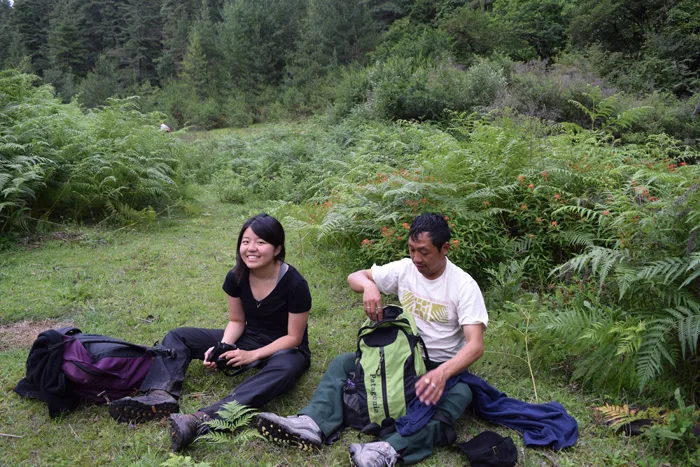Research in Bhutan
Today the students are enjoying lunch with some young monks from a nearby Lhakhang (monastery), and the sun has auspiciously been shining down on the tiny Himalayan kingdom of Bhutan. They’re taking a well-earned break before tomorrow’s research fieldwork begins. This year, we’re taking a group project approach to account for the brief amount of field time available during a six week summer program. We have four groups, each studying a fascinating aspect of Bhutan’s environment.

One group is examining the impacts of conservation on communities located in the Wangchuck Centennial National Park. The park was established in 2008 to celebrate one hundred years of monarchy in Bhutan under the Wangchuck family. In the following seven years, families have seen dramatic changes as ecotourism, organic agriculture, and cordycep collection have been introduced, altering people’s livelihoods.
Another group is examining water quality along the Jakar Rangchu, a stream that flows through our campus and eventually joins Chamkharchu, which eventually joins the Bhramaputra River before flowing into the Bay of Bengal. The students will take various measurements along the stream to assess quality changes over space and identify potential pollution sources along the way. As the stream serves as the drinking water supply for campus, the Ugyen Wangchuck Institute for Conservation and Environment (UWICE) is quite excited to see the results of their research.
Our third group is continuing biophysical data collection of local frog populations. Following dinner each night, these brave students will be chasing frogs aided only by the light from their headlamps. Once caught, the frogs will then be measured and various biometric data will be recorded, and then the frogs will be gently released back into their natural habitat. With any luck, the students might just discover a new species!


The last group’s research is continuing a long-standing SFS-UWICE research focus on community forestry. This year, they will travel to two different community forests to examine the impact of market integration on people’s interest in investing time and labor into the forest. One of the two is very integrated into the local timber markets and the other has been primarily using the timber within the community. It should be a great opportunity for the students to learn about the local interplay between the people and the forests of Bhutan.
So keep us in your thoughts and wish us luck as we embark on our research! Tashi Delek.

Related Posts

Cinder Cone Chronicles: Lessons from Drought, Data, and Determination

